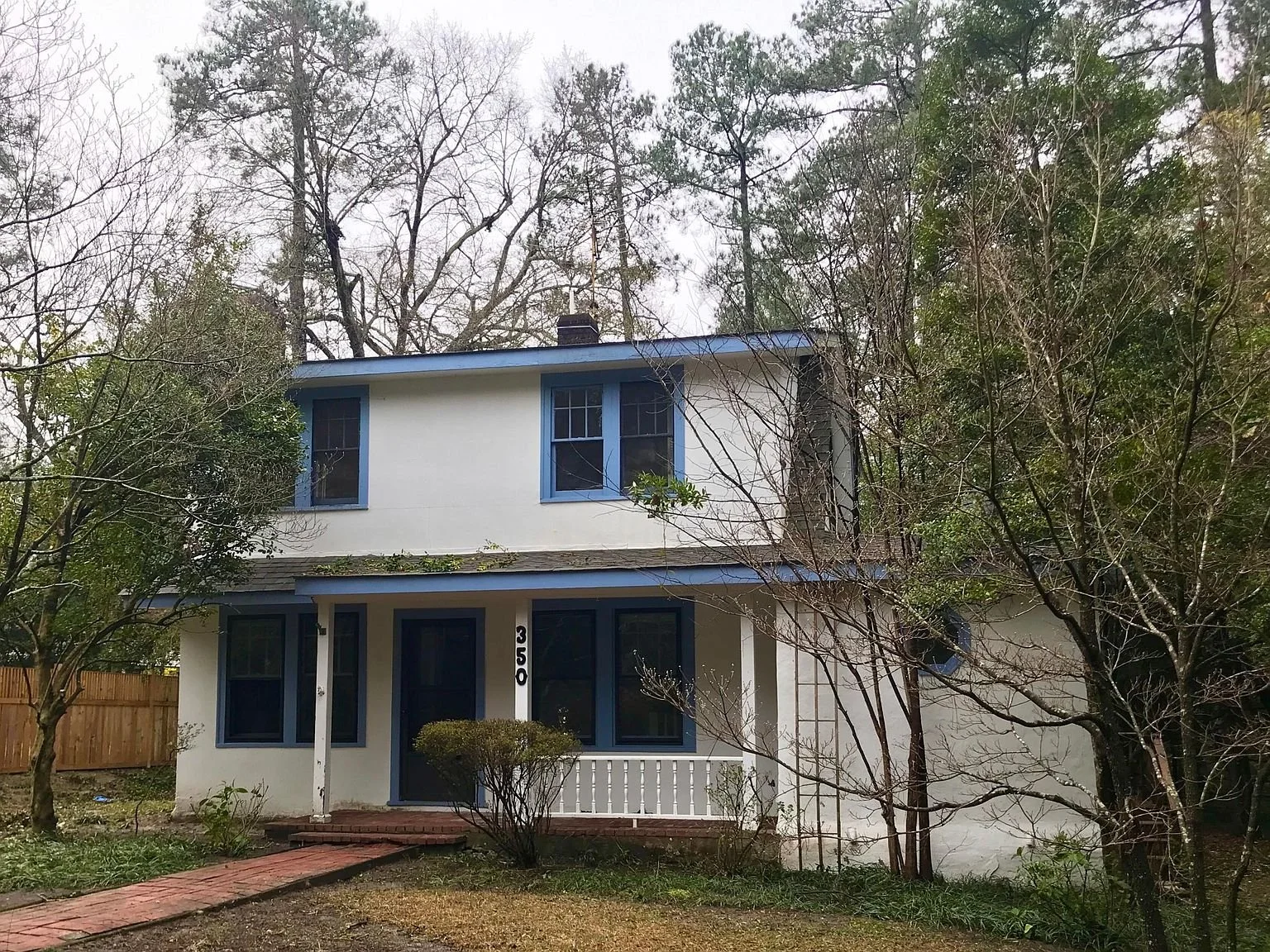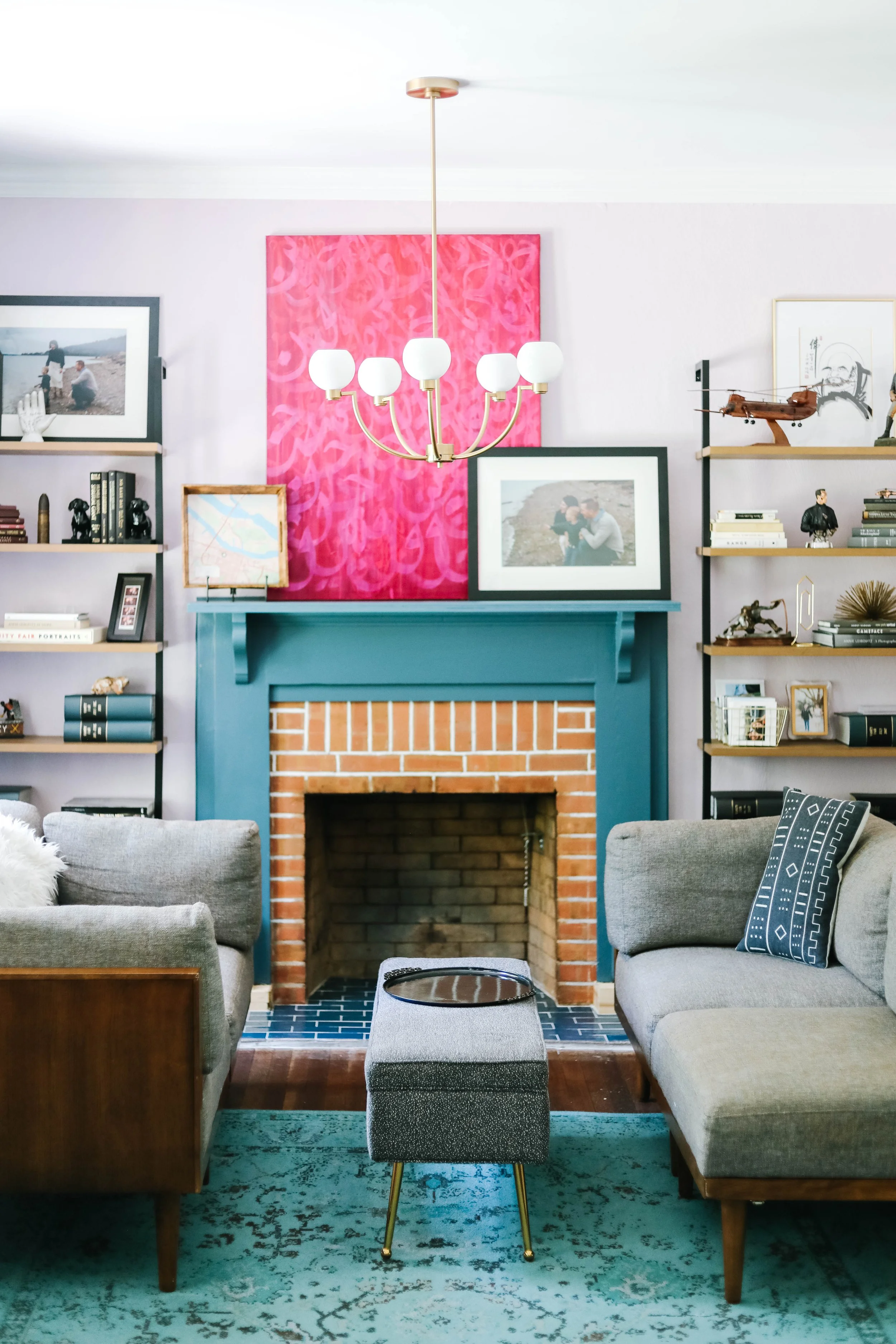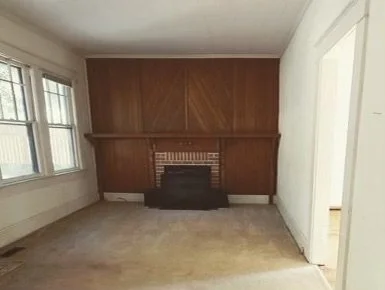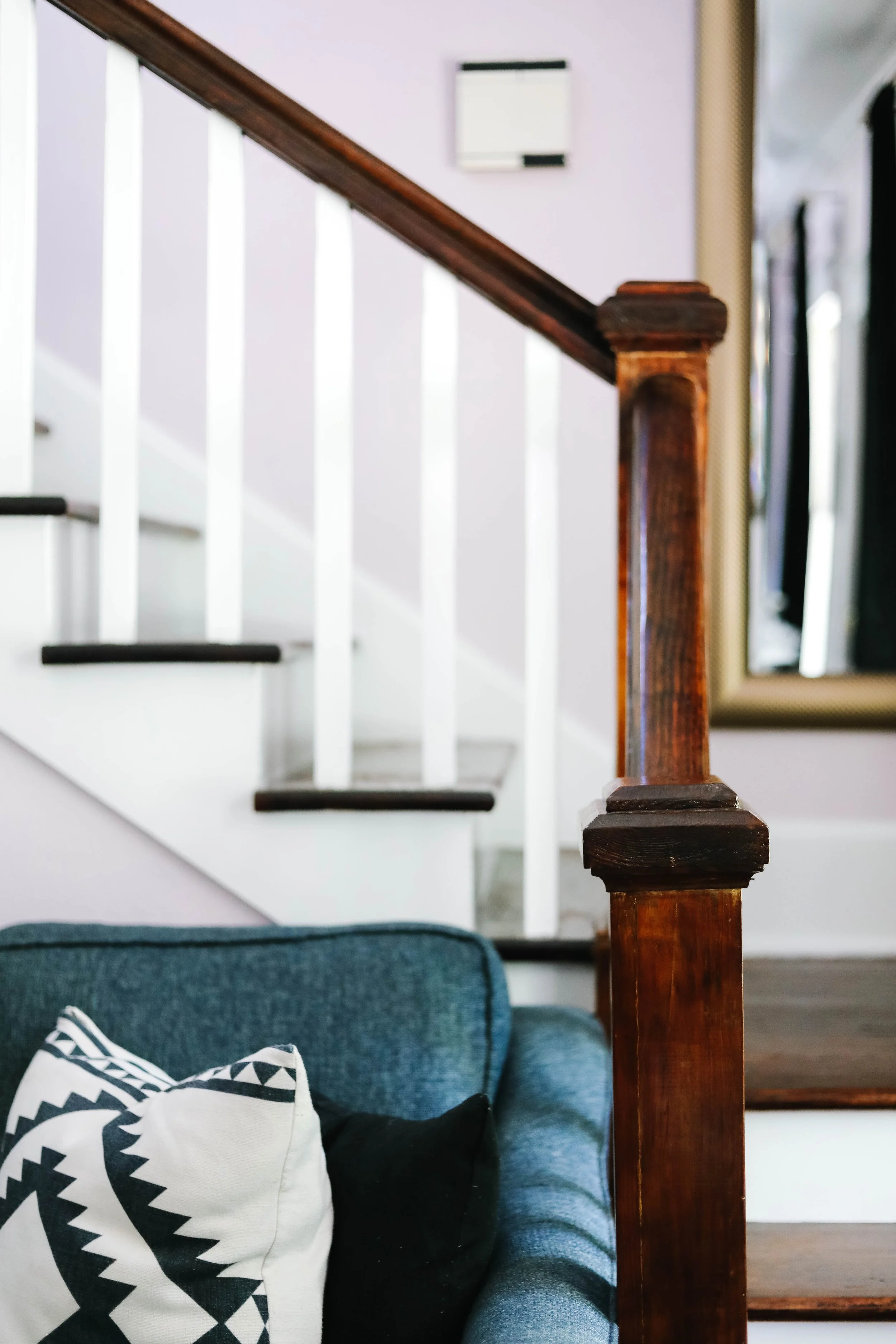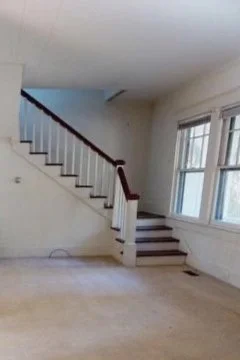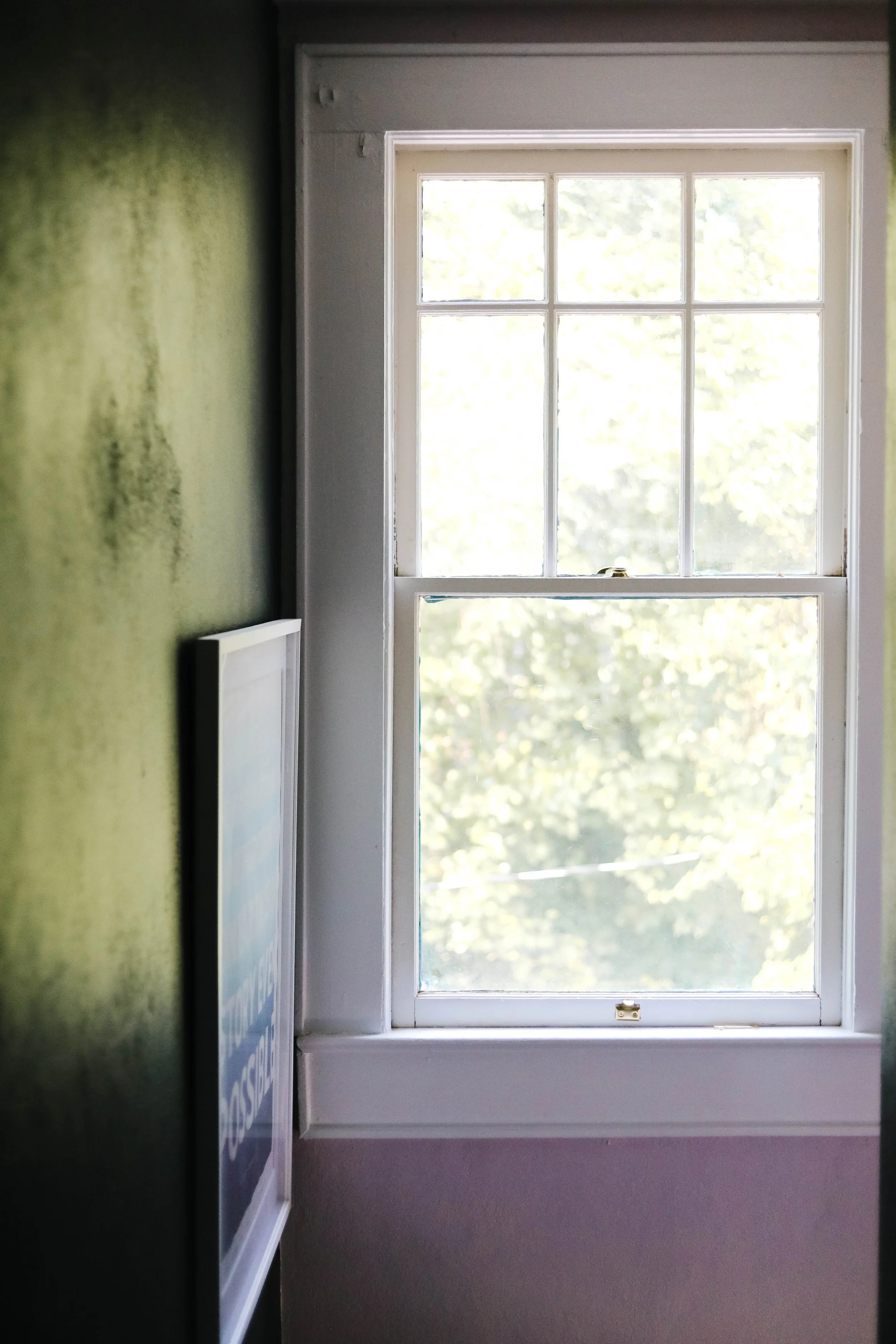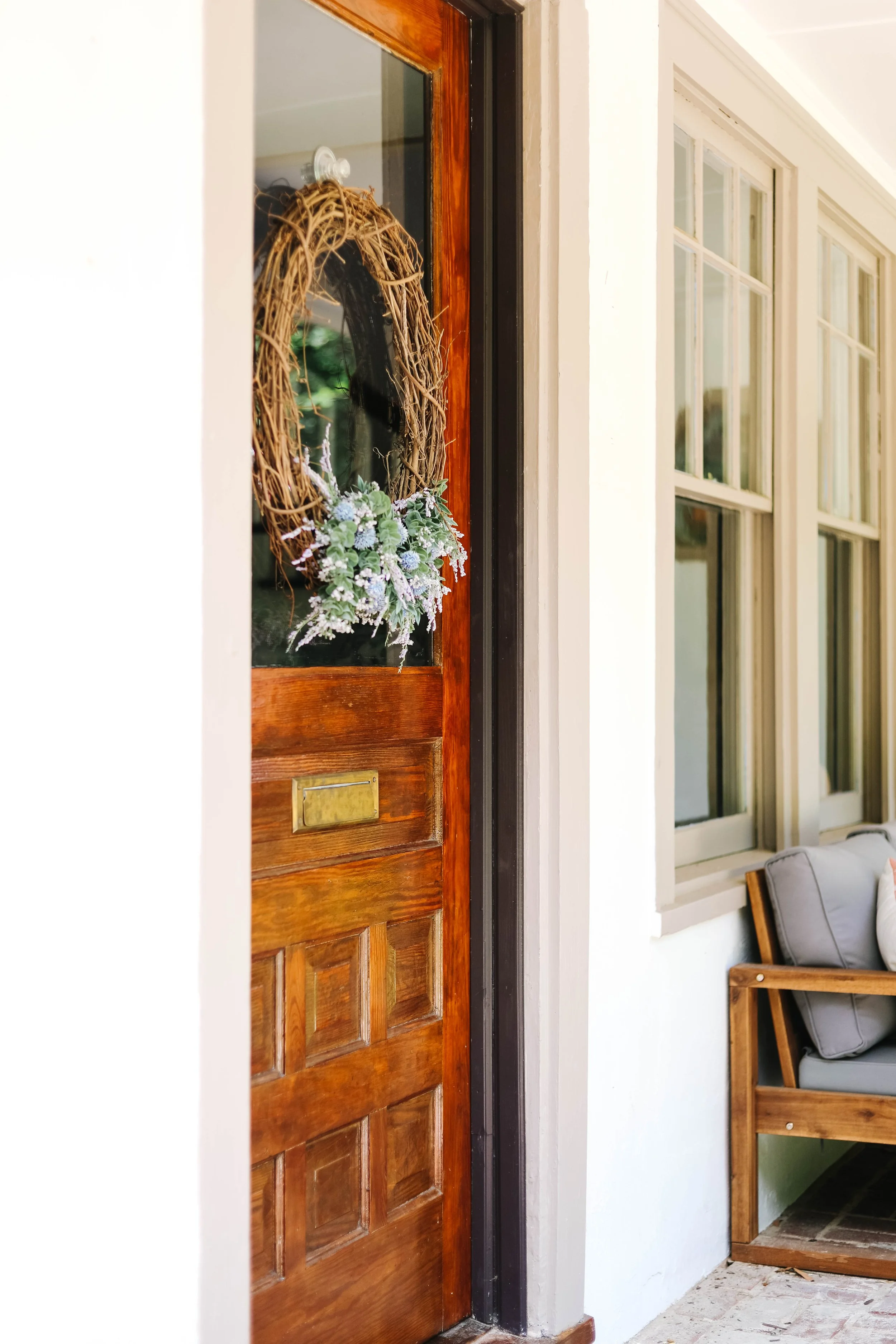The Sadler-DeBerry Cottage
Vision and planning from the beginning helped the Poling family turn a long-neglected 1910 Southern Pines cottage into show-stopper.
Tell us a little about yourself.
My name is Cassandra Poling and I'm a late-30s writer, editor, and mom of 2 boys -- 3.5 years and 3 months. My husband and greatest partner serves in the Army.
The Sadler-DeBerry Cottage pre-rehabilitation
How did you find your house?
Neither my husband nor I thought we'd actually buy this house. Prior to our military move, my husband Mike and I came to the area to house hunt in March 2021. Most of the properties in our price range were large, outdated ranches fetching prices far too much for their offering. Everything needed work, and we really wanted to live downtown. So on our lunch break from open houses, we drove by this Southern Pines property that I had been eyeing online. It was downtown, walking distance to so much, cute, still on the market after a few weeks, and in our price range. The catch, of course, was it had been greatly neglected over the past 40 years and needed a significant amount of work. Out of morbid curiosity, we asked our agent to meet us and let us take a look around. The first thing we noticed once inside was the smell. Then, the water damage. Next, the uneven and warped floor boards. The basement felt like a cemetery. We didn't dare open the circa 1970s refrigerator to see if it still worked. Though I am handy and have owned historic properties before, I never thought my husband would bite. He likes creature comforts, and in my older age, I do too. And yet, for weeks after we got back home, we couldn't stop thinking about the dingy cottage in downtown Southern Pines.
What is the history behind your home?
Widower Charles J. J. Sadler Sr. moved to Southern Pines in 1898 and owned the home at 520 S Ridge Street. In 1910, he had the properties at 360 and 350 E Illinois built to accommodate his “wintering” children and grandchildren.
After Sadler Sr.’s death in 1934, his children sold 350 E Illinois to Joseph D. DeBerry and Helen B. DeBerry in 1937. Joseph was a prominent baseball player and coach in town until his death in 1944. When we bought the property in 2021, there had only been four additional owners and the house had been primarily used as a long-term rental.
The mantle pre-rehabilitation
Why did you want to rehabilitate a historic home versus buying new?
Restoring a pre-War home has been on my dream bucket list since I was in college. I love to improve things and make them beautiful (I am an editor by trade). I 10000% over-romanticized restoration, but owning a new home is out of the question for me. After seeing houses be constructed in less than 60 days during the mid-2000s, I knew there would be lots of quality concerns to deal with in new homes. Why not put that effort into something historic?
What style is your home?
1910 Dutch Colonial-inspired Vernacular Cottage
The staircase pre-rehabilitation
What challenges did you face when rehabilitating your home?
After a botched military move, we found ourselves living in our rehabilitation project far earlier than anticipated. We have a son who was almost 3 at the time and the week we moved in, I found out I was pregnant. Besides all of that, living in a restoration is challenging regardless. There have been many episodes of mid-project regret and wondering if we made the right choice. We've had foundation, roofing, plumbing, and electrical repairs. New HVACs. Chimney updates. New paint all over. Gutters added. Landscaping. Pest control is on my speed dial. And, my husband and I both agree we have no regrets about restoring this cute cottage.
Are there any features you had to replicate? What features did you have to update?
I drove 4 hours round-trip to pick up a 1912 mantel and fireplace surround. I've been searching high and low for affordable period tile. We had our living room ceiling re-plastered. We plan to redo the original windows, floors, and 5-panel doors.
Describe your favorite part of your home.
The original windows and the number of windows really captured my imagination. The morning and afternoon light is rejuvenating.
Did you utilize any special financing or the 15% state tax credit for your project?
My house is not registered individually on the National Register of Historic Places nor is it located within Southern Pines’ National Register District, so I could not utilize the 15% State tax credit.
What is one piece of advice you would give someone wanting to rehabilitate a historic property?
Have a plan. Have a plan from the outset of buying the home, down to having a plan for every project. Even the smallest tasks can spiral out of hand if there's not a Plan A, Plan B, and Plan C established. Build a support group of like-minded preservationists. On my darkest restoration days, I've looked to my network for a reason to bounce back and keep making progress. Have a financial plan. This goes back to the first point, but really can't be stressed enough.
You can follow the Poling family’s rehabilitation journey of The Sadler-DeBerry Cottage on Instagram at @1910.handsome.cottage
*some responses have been edited for clarity



